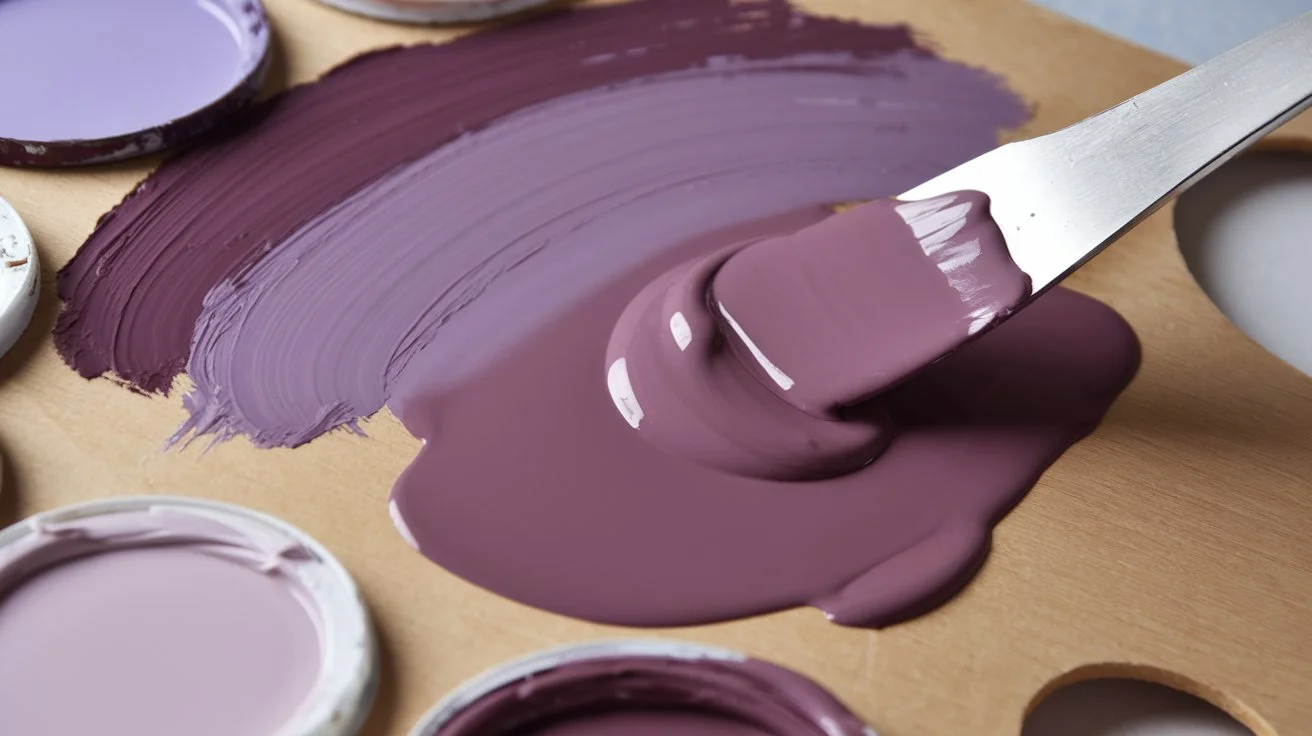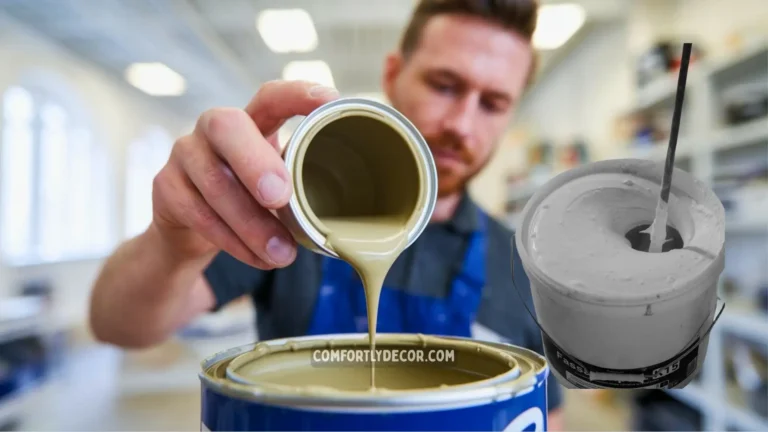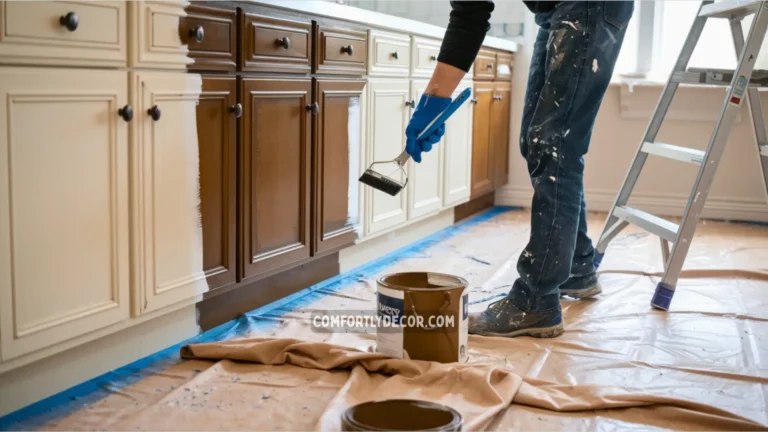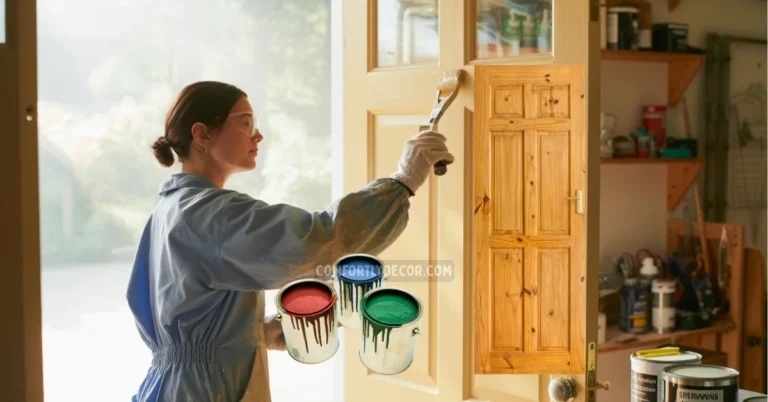How to Mix Mauve Paint: A Step by Step Guide
Unlocking the perfect mauve shade is not just an art; it’s a creative science. Mauve, a soft, muted hue nestled between lavender and purple, adds sophistication and tranquility to art, interiors, and design. Whether you’re a seasoned DIYer, an interior designer, or someone looking to create something unique, this guide will walk you through everything you need to know about mixing mauve paint.
What is Mauve?
Mauve, derived from the French word for the mallow flower, was accidentally discovered in 1856 by Sir William Henry Perkin while attempting to synthesize quinine. Its early popularity during the Victorian era gave it a reputation as a symbol of elegance and romance. Today, mauve continues to play a vital role across art and design, thanks to its versatility and timeless appeal.
On the color wheel, mauve falls between red and blue, making it both calming and sophisticated. It’s a favorite for creating subtle accents and grounding more vibrant tones.
Also Read: 14 Dreamy Mauve Bedroom Ideas
Gathering Supplies
Creating the perfect mauve starts with having the right supplies. To ensure smooth mixing and application, here’s what you’ll need:
- Acrylic Paints:
- Crimson Red (for warmth and base hue)
- Ultramarine Blue (to add depth)
- Titanium White (to lighten and create the softness of mauve)
- Palette:
- Use a flat, easy-to-clean palette for seamless color blending.
- Brushes:
- Keep a variety of brush sizes for testing and applying your mauve shades.
- Palette Knife:
- Ideal for thorough and even mixing of paints.
- Water Container:
- Essential for cleaning brushes and thinning paints, if needed.
Having these materials ready will streamline your process, leaving you free to focus on creativity.
Step-by-Step Mixing Instructions
Mixing mauve is straightforward if you follow these steps:
#1. Start with Red
Begin by placing a dollop of crimson red on your palette. This serves as the foundation.
#2. Add a Touch of Blue
Introduce ultramarine blue gradually. Start small and mix thoroughly after each addition until you achieve a deep purple hue. Adding the blue slowly prevents the mixture from becoming overwhelmingly dark.
#3. Lighten with White
Once you achieve purple, incorporate titanium white to soften the mixture into a gentle mauve. Add small increments of white, blending thoroughly, until you reach your desired shade.
#4. Test Your Color
Always test the mixed paint on a piece of scrap paper or canvas. This helps you see how it dries and interacts with light. Adjust if needed by adding more red, blue, or white.
Tip: If the paint feels too cool (leaning toward lavender), add a bit more red. If it’s too warm, balance it with a touch more blue.
Tips and Tricks for Mixing Mauve

Adjusting the Shade
- For lighter mauve, increase the proportion of titanium white.
- For darker mauve, add more red and blue without white.
Troubleshooting Common Issues
- Mauve looks muddy: Ensure you’re using clean tools and high-quality paints. Over-mixing can dull the colors.
- Too warm or cool: Balance with complementary colors. Try a tiny dash of orange to warm or turquoise to cool.
Experimenting with Ratios
Play around with the red and blue ratios to explore different shades of mauve, like muted lilac or deeper plum tones.
Use High-Quality Paints
Better pigments ensure consistent results and minimize the need for excessive adjustments.
Application Ideas
Mauve isn’t just a stunning addition to your palette; it’s a versatile shade that enhances various creative and design projects.
Distinctive Uses in Interior Design
Mauve brings warmth and elegance to living spaces.
- Accent Walls: A mauve accent wall creates a calming yet sophisticated focal point in rooms like living areas or bedrooms.
- Soft Furnishings: Choose mauve upholstery, throw pillows, or curtains for a cohesive yet striking look.
- Decorative Accents: Incorporate mauve through wall art, vases, or area rugs for subtle sophistication.
Adding Mauve to Artwork
Artists love mauve for its adaptability and ability to enhance a piece.
- Backgrounds: Mauve makes an excellent background for highlighting bold subjects.
- Blending Shades: Combine mauve with neutral grays or creamy pastels for depth and texture.
- Balance: Use mauve strategically in bold, colorful compositions to create visual harmony.
Tip: Pair mauve with complementary shades like sage green or light gray for a balanced and modern look.
FAQs
Recap and Inspire Creativity
Mixing mauve is an easy and rewarding way to expand your creative horizons. By combining crimson red, ultramarine blue, and titanium white, you can tailor this timeless shade to your unique needs. Whether you’re adding a sophisticated touch to a mural, redefining a room with mauve furnishings, or crafting something entirely new, the possibilities are endless.
Want to elevate your projects even further? Explore complementary colors and experiment boldly to discover your perfect hue.
Now, grab your brushes (and your imagination) and start crafting with this elegant shade. Happy painting!

I am Mindy Medford, a home décor, paint, and design specialist with over a decade of hands-on experience transforming ordinary spaces into cozy, personality-packed havens. Since 2013, I have been helping homeowners discover the art of beautiful yet practical design. I share my love for color, texture, and layout—making stylish interiors & exteriors feel achievable for everyone. Whether it’s picking the perfect paint shade or reimagining a small space, I’m here to guide and inspire.







